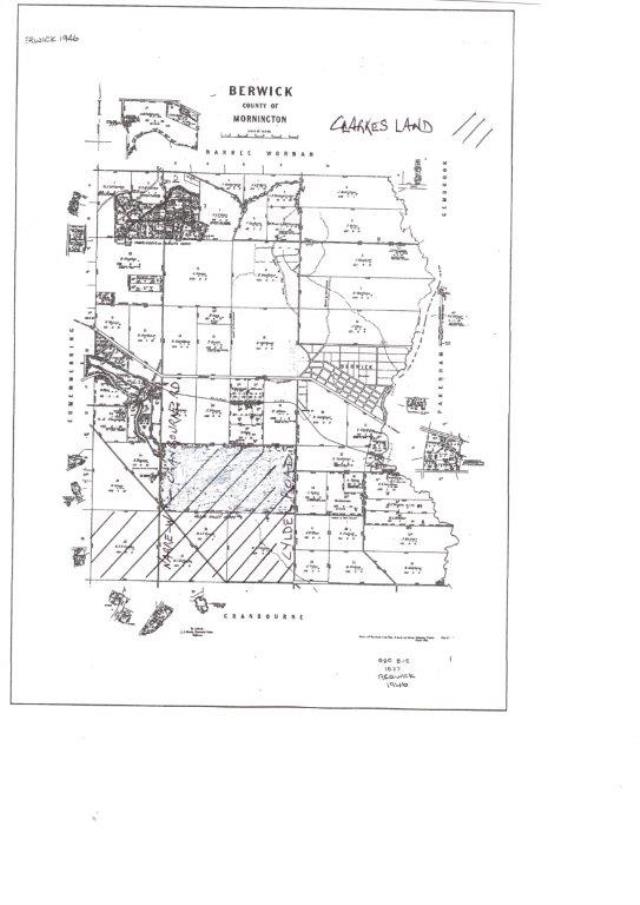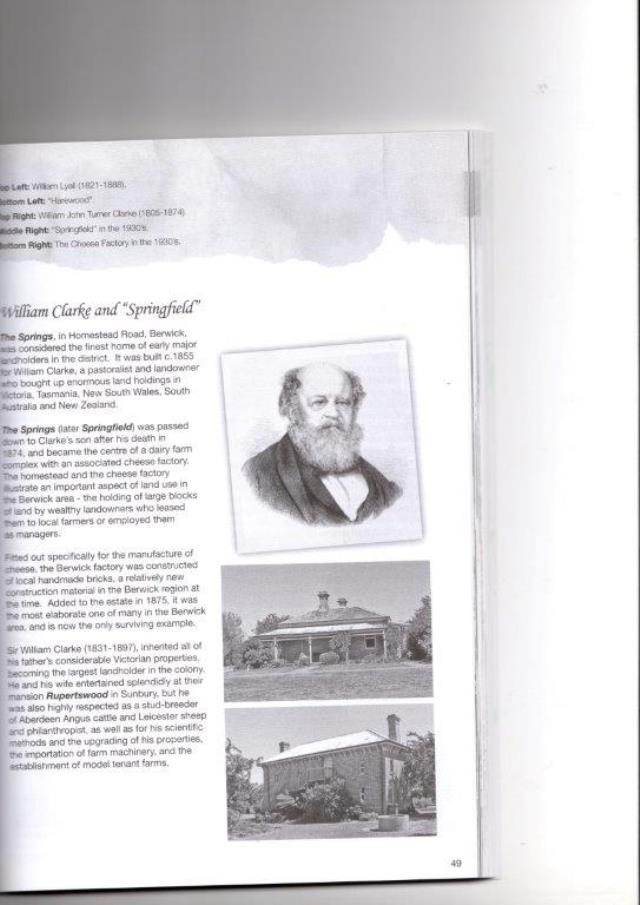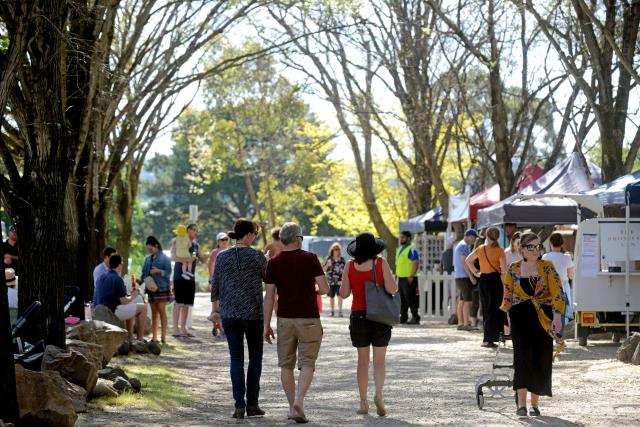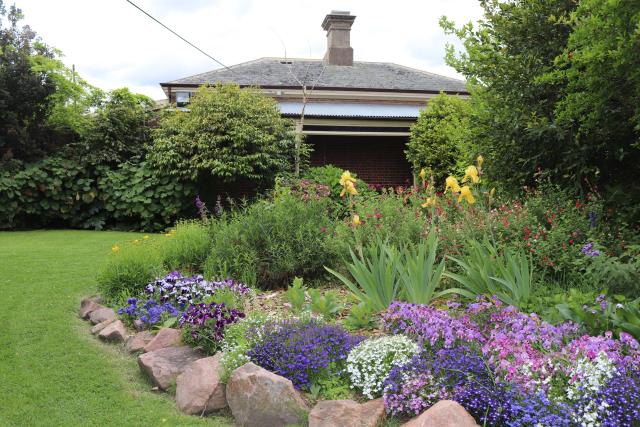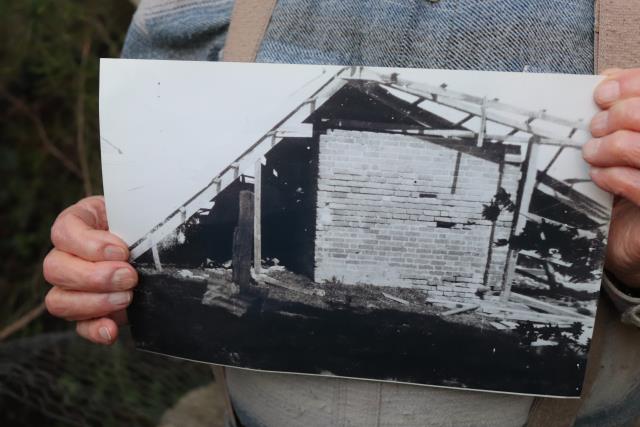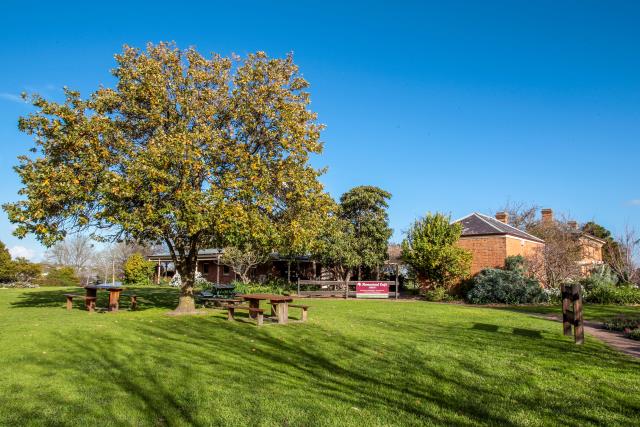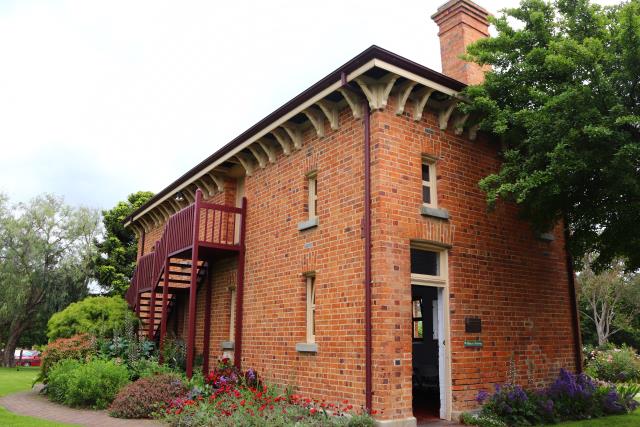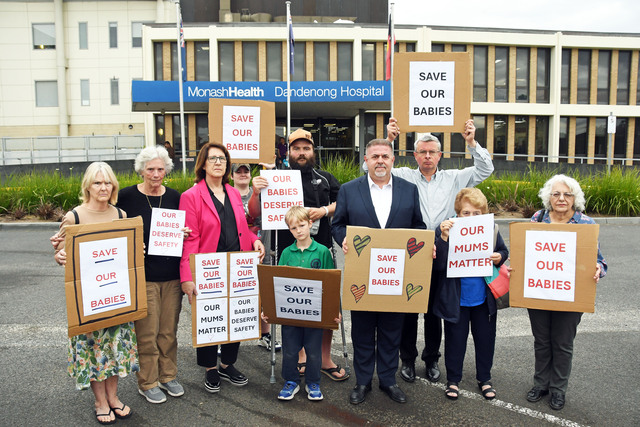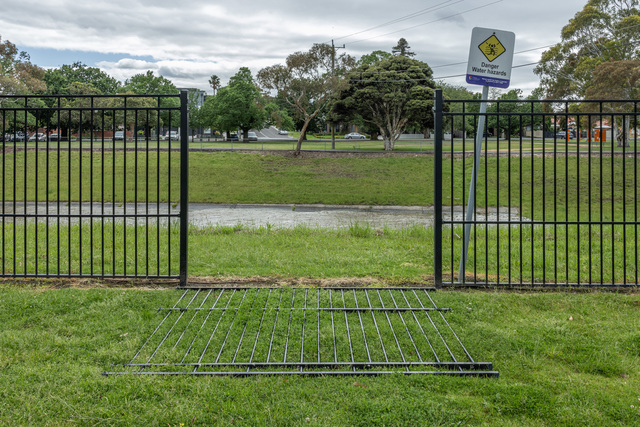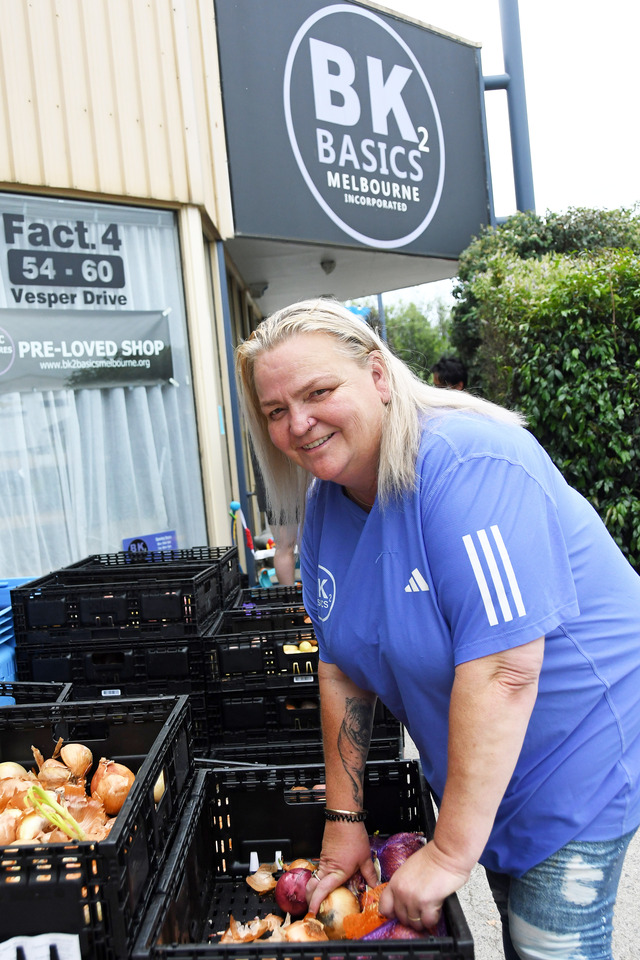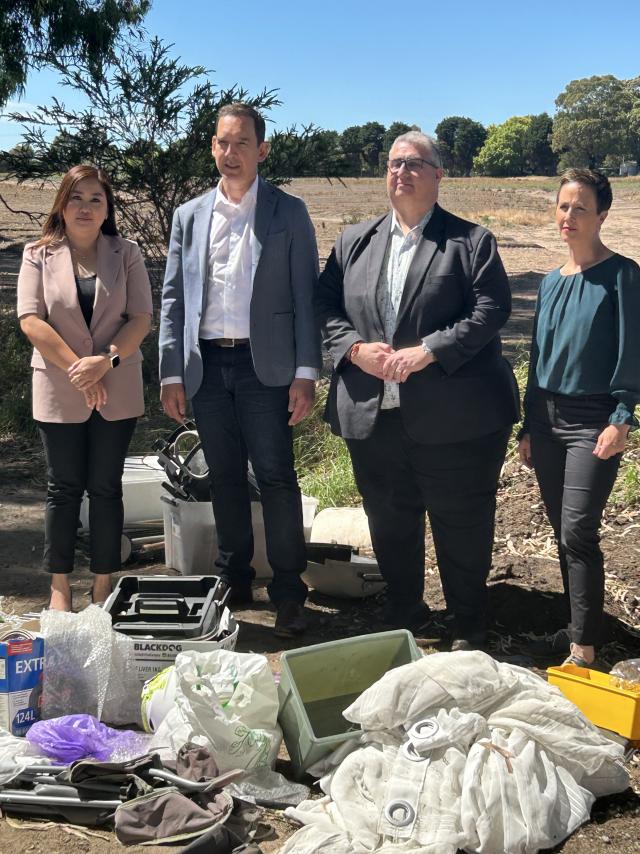PRECEDE
Most now associate The Old Cheese Factory in Berwick as a beautiful venue for local events, but it has a rich and interesting history, as NEIL LUCAS explains in his latest look at the significance of place and street names in the region.
Old Cheese Factory, Homestead Road, Berwick
Although the Old Cheese Factory was built in 1875 there is quite some interesting background to the area prior to that date.
In 1854 a large area south of Berwick generally between the Clyde Road and Narre Warren-Cranbourne Road was taken up by a rich pastoralist William J T Clarke, known as “Big” Clarke.
The land comprised in the order of five square miles (1295 hectares) and Clarke appointed managers to oversee a number of farming ventures. The land was covered in tea-tree and much hard work had to be undertaken to establish grassed areas for the grazing of dairy cattle, fattening beef cattle and maintaining horses used for work on the farm and for transportation.
Clarke and his wife Elizabeth had emigrated from England to Tasmania in 1829 where he established a butchery resulting in a grant of more than 800 hectares of land. His success in breeding both cattle and sheep and in operating his business allowed him to acquire further land and by 1853 he owned 32,000 hectares in Tasmania. His wealth expanded rapidly and he began investing further afield which included 60,000 acres (24,000 hectares) in the Sunbury area in Victoria.
William and Elizabeth produced 4 children, all born in Tasmania – William John Clarke (later Sir William) was born in Tasmania in 1831, Thomas 1832 and Joseph 1834. Their son William following his initial education there, was sent to England to conclude his studies.
Upon his return young William began working on his father’s farms and in time was given the responsibility to oversee a number of properties.
His father, having come to Melbourne to live, was persuaded to stand for election to the Victorian Parliament and succeeded in achieving this endeavour representing the Southern Province in the Legislative Council from 1856 to 1870.
At the time of his death in 1874 William J T Clarke owned 87,000 hectares of freehold land in Victoria, Tasmania, New South Wales and New Zealand. Clarke was reputed to own more freehold land than any other man in Australia. He bequeathed all of his properties in Victoria to his son William John.
William married Mary Walker in 1840 and they produced four children. The family moved to Victoria and lived in a house on the Sunbury property which was not sufficient for the family’s growing size, nor William and Janet’s “station in life”.
Accordingly, William commissioned the construction of a fine new residence named Rupertswood. The story of this estate and the activities there is another story worth telling. Mary died in 1871 and two years later William married again to Janet Snodgrass with whom he produced seven children.
In 1870 William was appointed as president of a group with the goal of organising an exhibition modelled on the great exhibitions being conducted in Europe at the time. The plan was to not only promote commerce, industry, art, science and education to the world, but also to outdo Sydney which had similar ideas of holding an exhibition of some description.
Clarke’s team succeeded in their goal and plans for a building to house the exhibition were drawn up and approved. The Exhibition Building was constructed and the Melbourne International Exhibition was conducted in 1880-81. (Later – in 1980 – Queen Elizabeth 11 conferred the title “Royal” to the Exhibition Building and it is now a World Heritage Site.)
In 1882 William’s position in Victoria and his achievements in public life were recognised when he was granted an English Hereditary title becoming a Baronet known as Sir William Clarke.
William John had many business interests in the city in the area of banking and insurance.
In 1878 William was elected to the State Legislative Council in the electorate previously represented by his late father. He cared little for parliamentary life and it was often considered that he may not continue in this role. In fact, he had to be persuaded to continue.
Towards the conclusion of his first term a meeting was held in September 1881 at the local Bain’s Border Hotel in Berwick with the purpose of encouraging William to continue in Parliament. The local paper recorded:
“The Hon. James Buchanan, MLC was in the chair. It was moved by Mr Murdoch McDonald, seconded by Mr Councillor Hanley, that the Hon. William J. Clarke be respectfully and correctly solicited to retain his seat in the Legislative Council of Victoria during his temporary absence in Europe. Moved by James Wilson, Esq., J.P., and seconded by J.Barr, Esq., J.P., that the Hon. James Buchanan be requested to wait upon and convey the wishes of the meeting to the Hon. William J. Clarke. It is needless to say that both motions were carried unanimously, as was also a vote of thanks to the chairman, proposed by Mr McDonald, and a vote of thanks to Mr M. McDonald, proposed by Mr Bain.”
It is interesting to note that Murdoch McDonald was the cheese-maker at one of Clarke’s farming properties The Springs, a dairy farm fronting the Clyde (Berwick-Cranbourne) Road.
The Springs comprised 3180 acres (1287 hectares) and was a dairy operation. In 1865 the McDonald brothers leased this property from William Clarke.
The McDonalds were born on the west coast of Scotland and emigrated to Victoria arriving with their mother and sister in 1849. At the time of their arrival Malcolm was 35 years, John 25, and Murdoch 16, and their sister Ann was 21. They must have taken up farming opportunities and met with some success for in 1865 they were in a position to take on the lease of the large The Springs property for 300 pounds per annum.
William Clarke was interested in scientific farming and encouraged the tenants of his large number of farming properties to improve their operations in line with the standards of the time. He offered generous prizes for the best farms and provided long leases at moderate rents to encourage his tenants.
In this context, Clarke built the homestead circa 1855, and later in 1875, the external kitchen and a model cheese factory at The Springs and provided the latest cheese making machinery for the factory. 75,000 bricks were needed for the two buildings.
The two-storey cheese factory built in 1875 was designed by architect George “Diamond” Browne. The lower floor was utilised for the making of the cheese. Large flat stones were used for the floor and a hole in the wall on the west side was where the spilt waste was washed out. When the building was converted to an art gallery more than 100 years later a concrete floor was installed and the hole in the wall filled in.
A single and very narrow staircase provided access to the upper storey. The staircase was of interesting construction in that it was made solid and held together by the use of wedges (no nails). Again, more than 100 years later the staircase was deemed to be unsafe and the City of Berwick’s carpenter, a very skilled tradesman Hayden Merry, re-built the staircase in exactly the same form of construction as the original – no nails, just wedges.
The cheese factory was designed with a view to optimising the maturation and storage of cheese. This involved the building being constructed with a cavity wall (nine-inch brick external wall and half thickness internal wall) and a double-layered roof (galvanised iron outer and timber shingles inside). These two measures ensured that the cheese was maintained at a constant temperature. Narrow windows low to the floor allowed a small amount of light to enter with limited heat transfer and a fire place at either end could be lit to warm the upper area if required. On the east wall of the upper storey was a doorway from which cheese could be transferred up or down – this doorway is now used for public access via a new external staircase. Adjacent to the cheese factory a large brick domed underground tank was constructed to provide water for the house and for the cheese making process.
A large cow shed almost 50 metres in length was established down the hill to the west of the cheese factory and had sufficient stalls for the milking of 60 cows at one time. Another underground brick tank was located adjacent to the cow shed.
Murdoch McDonald was the cheese-maker and was reported as making 150 cheeses each week. The McDonalds employed a dozen workers and milked 200 cows each day. They remained at The Springs for more than two decades until their lease expired in 1888. A clearing sale in December that year saw the sale of 224 dairy cattle and the cheese making equipment.
At one time the Mornington Farmers’ Society (now Berwick Show Society) was looking for a new site for showgrounds.
Sir William Clarke sold the society 12 acres (five hectares) of his land fronting the Narre Warren-Cranbourne Road for 10 pounds per acre. The land turned out to be unsuitable for show purposes and with the difficulties being experienced at the time due to the abrupt end of the land boom the value of the land dropped away.
Nevertheless, the generous Sir William purchased the land back from the society at the same price they had paid for it. The society was one of very few societies to survive the after-effects of the land boom.
Following Sir William Clarke’s death in 1897, The Springs was sold in a number of parcels. In 1904 the homestead and cheese factory portion comprising 1275 acres (516 hectares) was purchased by William Wilson of the Berwick pioneering family and renamed Springfield (Edwin Greaves, the purchaser of another portion to the south had taken The Springs name as the natural springs existed on the portion which he had acquired – the springs were located in the flat land generally between what is now Moondarra Drive and Clyde Road).
William Wilson leased the property until 1925 when it was acquired by state authorities and later subdivided into smaller allotments for soldier settlers. One of the lessees was the Wilmot family who had 11 children. The old cheese factory came in handy for them as their seven sons slept on the upper floor, and their four girls slept in the homestead. The family dairy farmed and grew oats and hay for their 30 horses.
In 1936, following the subdivision of the farm, soldier settler World War veteran 2nd Lieut Charles Hatten took possession of the property and it remained under his name until his death in 1980. The property was then resumed by the Crown.
At that time the former City of Berwick (now part of City of Casey) was in the need of further open space for the rapidly developing residential communities to the south of Berwick.
The Department of Crown Land, which controlled the Springfield property, was persuaded to reserve the property for public use, arts and crafts, and the Council was appointed as the committee of management. Council had the idea that the cheese factory, from then known as the “old” cheese factory, could be put to use for the arts and crafts and that was achieved.
Gerry Albers was appointed as manager and a community support group known as the “Friends of the Old Cheese Factory” was formed. Much voluntary work was carried out as well as works undertaken by the council.
As referred to earlier, a concrete floor was installed in the old cheese factory, the external staircase constructed and the gardens laid out and extended to complement the buildings.
During the Mayoral term of Cyril Molyneux of Berwick the new project was opened on 20 October 1985. Attendance at the opening celebrations by the Melbourne Hunt horses and hounds provided a great spectacle for those in attendance.
Later that year Mayor Molyneux invited Sir Rupert Clarke (Sir William’s grandson) to visit the Old Cheese Factory and was able to show Sir Rupert how the buildings were being utilised.
Over the ensuing years the Old Cheese Factory has come under a variety of management arrangements and has witnessed some interesting events. With the addition of new buildings an enlarged number of community activities are held there including the Berwick Farmers’ Market.
Two additional buildings moved to the site in the 1980s were the Glen Waverley Methodist Church and a shop from Gloucester Avenue Berwick. The church was given to Council for a token amount of $1 and council was responsible for moving the building which cost in the order of $2000.
The weatherboard shop was located in Gloucester Avenue on the north corner of Richardson Grove. The owner Terry Martin donated the building to the council as it was due for demolition to make way for a commercial development. The shop which included a dwelling in the rear was accordingly cut in half by a chainsaw and the front half transported to the old cheese factory.
At the railway crossing in Clyde Road arrangements had to be made to raise the overhead electric wires to allow the pitched roofed building through.
An early development plan for the Old Cheese Factory reserve included the planting of a double row of trees across the centre of the reserve from east to west and another row commencing behind the buildings and running to the north fence. In the late 1980’s the first plantings were carried out with elms grown by the Ronneby Tree Farm in Berwick. This now large double row of trees is a welcome addition to the reserve.
William Clarke whose foresight and goodwill resulted in the now historic buildings being erected, was, following his death, described by the Archbishop of St Patrick’s Cathedral Melbourne:
“He secured universal esteem, not only by his magnificent charity, by his liberal patronage of the arts and sciences, by his useful citizenship, by his splendid though unostentatious hospitality, but still more by innumerable acts of private generosity, which he neither wished nor intended that the world should know anything of. Then his genial affability, his extreme courtesy, his practical sympathy with the poor, the noble example he set as a model landlord, all combined to make him the most popular public man in the community.“
The fact that 150 years later the buildings Sir William had constructed are being preserved and used by the community, including for the arts and crafts, would no doubt be pleasing to him.



